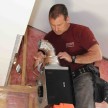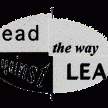Bathroom and Dryer Duct Cleaning
Bathroom Fan and Dryer Duct Cleaning
Today while emptying the clothes dryer I noticed the lint in the lint trap and started to think of fire safety and a past post of mine called Dryer Duct and Vent Safety.
It occurred to me that I have not cleaned my ducts in awhile. when was the last time you cleaned yours?
So after dumping the clean clothes on the bed, I decided to practice what I was preaching in the post and proceeded to take apart the dryer and duct to clean them.
My wife says I do this [get side tracked] on purpose, saying that I’d rather be fixing something ~ I blame it on A.D.D. . . don’t worry, I’ll fold the clothes, eventually!
The first and most important thing, besides not ending up with extra parts is to unplug the electrical power – Safety first!
I removed the access panel to expose the heating element and blower.
The picture above shows an even layer of lint dust approx. 1/8″ to 1/4″ thick
While the cover is off it is a good time to check for signs or wear or fraying to the belt. Look at the electrical connectioons for any burn marks or frayed wires.
The blower cover to the left of the flashlight was removed.
Inside the blower cover revealed a treasure: 35 cents, an earring, a chain, several finish nails and a few screws. [hmmmmm, I wonder who’s pocket they came from?]
The blower chute that leads to the exhaust pipe.
The blower wheel. I vacuumed this but it needed to be brushed to get sticking lint off.
The heating element. Lint dust can be seen accumulated on the bottom. This is one are where fires can start!
I used my refrigerator coil brush to clean the coils and the metal casing.
Testing the heating element – see the red? [below]
Turned the lights off for this photo. That’s HOT!
The U.S. Consumer Product Safety Commission estimates that over 15,000 dryer-related fires occur each year, causing an estimated $ 97 million in property loss.
After testing the dryer, I put everything back together [no extra parts] and moved on to the ducts.
By cleaning your dryer vent regularly, you increase airflow efficiency, decrease cost of dryer operation, reduce the amount of time required for clothes drying and prevent plug ups which cause problems.
If this type of maintenance is not to your skill level any appliance company will do this service for a fee.
The duct behind the dryer was a 32″ length of small metal hose and was clean. Make sure you use aluminum foil tape ro seal the joints – no screws.
Aluminum Foil Tape is coated with an aggressive, high temperature acrylic adhesive system and are designed for superior conform-ability in vapor sealing of fiberglass duct board, sheet
metal ducts.
This 42″ section of metal pie runs through my sons close and exhausts out a side wall. I removed the elbow, the pipe was clean so I did not run the brush through it.
Ace hardware sells a real nice brush to clean dryer vents for about $30.00. The brush attaches to your drill. See a picture of one here.
Clogged dryer vents cause your dryer to work harder and greatly increase the time it takes to dry your clothes [up to 2 or 3 times more] which wastes energy and increases your operating / energy costs!
I re taped the pipe and all seams to keep small dust from getting out. I recommend checking your dryer every four years.
Finished.
Seeing that I had a step ladder, vacuum and tools out I decided to take a peek at the bathroom shower fan.
I removed the fan motor box from the housing and cleaned it with the refrigerator coil brush and vacuum.
The coil brush was able to fit between the fan wheel fins nicely. The fins had caked on dust, most likely hardened and built up from the wet shower mist.
Once brushed clean I vacuumed all debris, vacuumed the exhaust port and flexible duct [not shown] and reassembled.
Those clothes finally were folded 5 hours later, just in the nick of time before my wife got home.
RELATED POST:
How To Clean A Dryer Duct




















